It shares borders with India to the west, north, and east and Myanmar (Burma) to the southeast. With its rich history, cultural heritage, and natural beauty, Bangladesh offers a wide range of Sure! Bangladesh, officially known as the People’s Republic of Bangladesh, is a country of tourist attractions.
The capital city, Dhaka, is a bustling metropolis where modernity blends with historical landmarks.
It is home to architectural marvels like Lalbagh Fort, Ahsan Manzil (Pink Palace), and numerous mosques and temples.
Dhaka also boasts vibrant street markets, museums, art galleries, and a thriving food scene, showcasing the country’s diverse culinary traditions.
01 The Sundarbans:
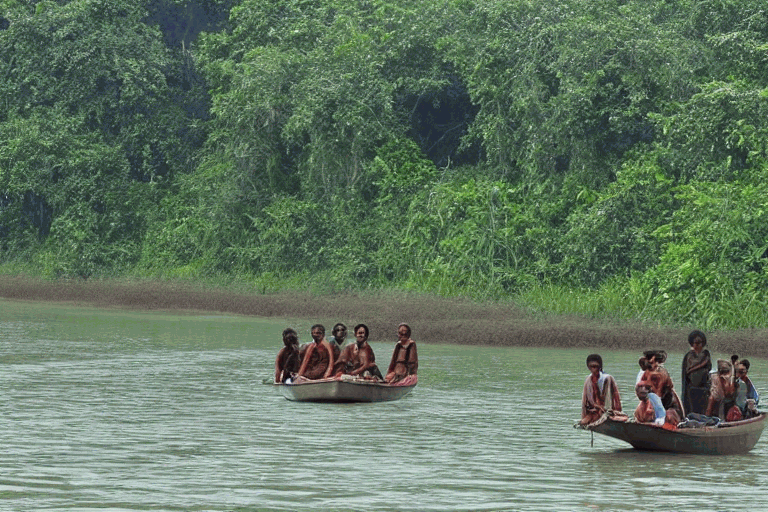
The Sundarbans is a vast mangrove forest located in the southwestern region of Bangladesh, extending into the Indian state of West Bengal.
It is recognized as a UNESCO World Heritage Site and is renowned for its unique ecosystem and diverse wildlife.
Spanning approximately 10,000 square kilometers, the Sundarbans is the largest mangrove forest in the world. It is formed by a network of rivers, creeks, and canals that crisscross through dense mangrove vegetation.
The name “Sundarbans” translates to “beautiful forest” in the Bengali language, reflecting the enchanting beauty of this natural wonder.
One of the main attractions of the Sundarbans is its population of Bengal tigers. It is estimated that around 400 of these majestic creatures inhabit the forest, making it one of the largest tiger populations in the world. However, due to the dense mangrove cover and the elusive nature of the tigers, sightings are rare, and visitors require luck and patience to catch a glimpse of these magnificent creatures.
Apart from tigers, the Sundarbans are also home to a rich diversity of flora and fauna. It serves as a critical habitat for various endangered species, including the Indian python, estuarine crocodile, Gangetic dolphin, and several species of birds.
The forest supports a complex web of life, with its unique ecosystem acting as a nursery for various marine and freshwater species.
Exploring the Sundarbans is primarily done through guided boat tours. These tours take visitors deep into the mangrove forests, offering opportunities to witness its abundant wildlife, experience the serenity of the surroundings, and marvel at the intricate network of waterways. Along the way, you may encounter deer, monkeys, wild boars, and an array of bird species.
For nature enthusiasts, the Sundarbans are a paradise of biodiversity and a haven for birdwatching.
The forest is home to over 260 bird species, including the colorful kingfishers, herons, eagles, and the rare masked finfoot. The sight of these vibrant birds amidst the lush greenery and tranquil waterways is a treat for bird lovers.
It’s important to note that visiting the Sundarbans requires careful planning and adherence to safety guidelines. Due to the dense mangrove cover and the presence of wildlife, visitors are accompanied by experienced guides who are well-versed in navigating the waterways and ensuring the safety of the visitors.
The Sundarbans is not only a natural treasure but also hold cultural and historical significance. The forest is deeply intertwined with the lives and culture of the local communities, who rely on its resources for their sustenance and livelihoods. The forest also has historical landmarks, including the Hiron Point Watchtower and the Katka Watchtower, which offer panoramic views of the surrounding wilderness.
Overall, a visit to the Sundarbans is an opportunity to immerse yourself in the beauty of nature, witness incredible wildlife, and gain a deeper understanding of the delicate balance of ecosystems. It is a destination that appeals to nature enthusiasts, wildlife lovers, and those seeking a unique and adventurous travel experience.
02. Cox’s Bazaar:
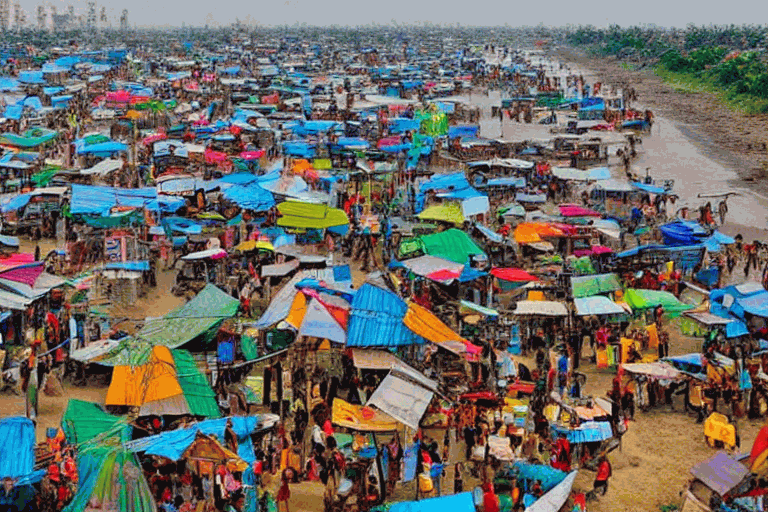
Cox’s Bazar is a popular tourist destination located on the southeastern coast of Bangladesh. It is known for having the longest natural sea beach in the world, stretching over 120 kilometers along the Bay of Bengal. Cox’s Bazar offers a unique combination of stunning natural beauty, golden sandy beaches, and a relaxed beach town atmosphere.
The main attraction of Cox’s Bazar is its expansive beach, which provides ample opportunities for relaxation, swimming, sunbathing, and enjoying beach activities. The sandy shore is lined with coconut palm trees, creating a picturesque backdrop. The gentle waves of the Bay of Bengal offer a pleasant bathing experience for visitors.
In addition to the beach, Cox’s Bazar offers several other attractions worth exploring. Himchari National Park, located a short distance from the town, is a beautiful hilly area with lush green forests, waterfalls, and hiking trails. Visitors can take nature walks, enjoy picnics, and soak in the tranquility of the surroundings.
Inani Beach, situated to the south of Cox’s Bazar, is another popular spot known for its pristine beauty and serene ambiance. It is less crowded compared to the main beach, making it an ideal place for peaceful walks, seashell hunting, and enjoying mesmerizing sunsets.
03 Chittagong Hill Tracks:
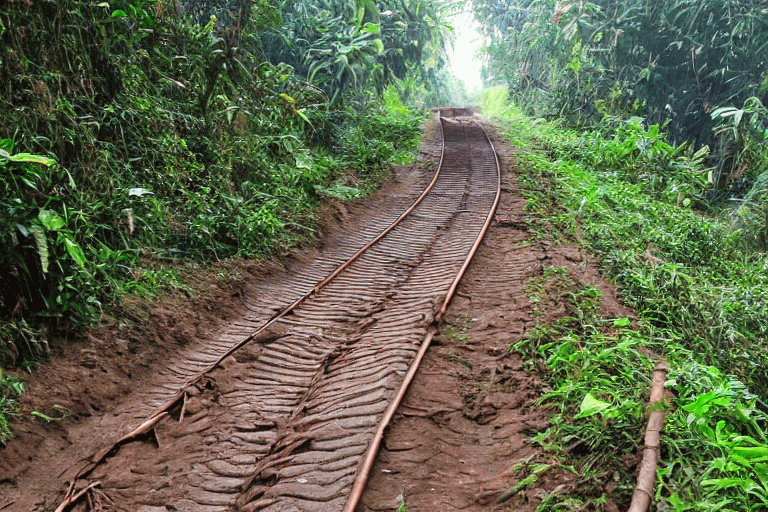
The Chittagong Hill Tracts is a scenic region located in southeastern Bangladesh, bordering Myanmar (Burma) and India. It is known for its breathtaking landscapes, lush green hills, diverse ethnic communities, and rich cultural heritage. The region comprises three districts: Rangamati, Bandarban, and Khagrachari.
The Chittagong Hill Tracts is home to several indigenous tribal communities, each with its unique traditions, languages, and way of life. The tribes, including the Chakma, Marma, Tripura, and Mro, have preserved their distinct cultural identities and contributed to the region’s cultural richness. Visitors have the opportunity to learn about their traditions, visit tribal villages, and witness traditional handicrafts and music.
Rangamati, the largest district in the Chittagong Hill Tracts, is characterized by its tranquil Kaptai Lake. The lake is an artificial reservoir created by damming the Karnaphuli River and offers scenic boat rides amidst picturesque hills and small islands. The indigenous communities residing around the lake add to its cultural charm.
Bandarban, known as the “Land of Clouds,” is famous for its panoramic landscapes, including the highest peak in Bangladesh, the Keokradong. It offers opportunities for hiking and trekking enthusiasts to explore the pristine beauty of the hills, visit tribal villages, and witness stunning waterfalls like Boga Lake and Nilachal.
Khagrachari, the least populated district of the Chittagong Hill Tracts, is renowned for its natural beauty and serene atmosphere. Travelers can visit the Alutila Cave, known for its limestone formations and religious significance, and explore the tribal villages to experience the local way of life.
Apart from the natural and cultural attractions, the Chittagong Hill Tracts is also known for its adventure tourism. Activities such as hiking, trekking, rock climbing, and river rafting are popular among adventure enthusiasts seeking an adrenaline rush amidst the region’s scenic landscapes.
It is important to note that the Chittagong Hill Tracts has its own unique set of travel regulations due to political and security considerations. Therefore, it is advisable for visitors to check the current travel guidelines and regulations before planning a trip to the region.
Overall, the Chittagong Hill Tracts offers a captivating blend of natural beauty, cultural diversity, and adventurous experiences. It is a destination where visitors can immerse themselves in the tranquility of nature, learn about indigenous cultures, and create lasting memories of their journey.
04 Srimagal:

Srimangal, also known as the “Tea Capital of Bangladesh,” is a small town located in the northeastern part of Bangladesh, in the Moulvibazar district. It is famous for its lush green tea gardens, scenic landscapes, and tranquil ambiance that attracts nature lovers and tea enthusiasts.
The town of Srimangal is surrounded by sprawling tea estates that produce some of the finest teas in the country. The region’s favorable climate and fertile soil make it ideal for tea cultivation. Visitors can explore the tea gardens, learn about the tea production process, and even participate in tea plucking alongside local workers.
One of the must-visit attractions in Srimangal is the Lawachara National Park. This tropical rainforest reserve is home to diverse flora and fauna, including rare species like the Hoolock Gibbon, Phayre’s Leaf Monkey, and various bird species. Nature enthusiasts can take guided treks through the park, enjoying the lush greenery, listening to the sounds of the forest, and spotting unique wildlife.
Another highlight of Srimangal is the Baikka Beel Wetland Sanctuary, a haven for migratory birds. During the winter season, numerous species of birds, including ducks, herons, and storks, flock to this wetland area. Birdwatchers can observe the feathered visitors and their fascinating behaviors in their natural habitat.
Srimangal is also known for its scenic beauty, with several picturesque waterfalls in the surrounding areas. Madhabkunda Waterfall, located about an hour’s drive from Srimangal, is one of the largest waterfalls in Bangladesh. It cascades down from a height of around 200 feet, surrounded by lush green hills and forests, creating a mesmerizing sight.
The town itself offers a laid-back atmosphere, with local markets and small eateries serving traditional Bengali cuisine. Visitors can try local delicacies such as pitha (rice cakes), shore ilish (hilsa fish cooked in mustard sauce), and various tea-infused dishes. Additionally, Srimangal hosts a tea festival called the “Srimangal Tea and Tourism Festival” that showcases the region’s tea culture and attracts visitors from across the country.
For those interested in cultural experiences, Srimangal is home to diverse ethnic communities, including the Manipuri and Khasia tribes. Travelers can visit their villages, interact with the locals, and learn about their unique customs, traditions, and handicrafts.
Overall, Srimangal offers a serene and refreshing retreat for nature lovers and tea enthusiasts. It provides an opportunity to indulge in the beauty of tea gardens, explore diverse ecosystems, witness migratory birds, and savor the tranquility of the countryside.
05 Rangamati:
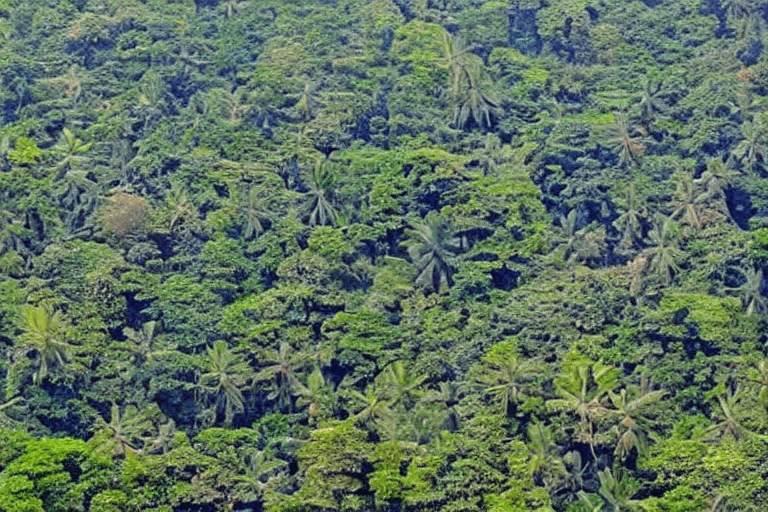
Rangamati is a picturesque district located in the Chittagong Hill Tracts region of southeastern Bangladesh. Known for its breathtaking landscapes, serene lakes, and diverse ethnic communities, Rangamati is a popular tourist destination for nature lovers and cultural enthusiasts.
The district is nestled among lush green hills, surrounded by the serene waters of the Kaptai Lake, which is the largest man-made lake in Bangladesh. The lake was formed by damming the Karnaphuli River, resulting in a stunning reservoir dotted with numerous small islands and hills. Visitors can take boat rides on the lake, enjoy the tranquil ambiance, and witness the beauty of the surrounding hills and forests.
Rangamati is home to various indigenous communities, including the Chakma, Marma, Tripura, and Bawm tribes. These communities have preserved their unique customs, traditions, and craftsmanship, offering visitors a chance to experience their vibrant culture. Travelers can visit tribal villages, interact with the locals, learn about their traditional crafts like weaving and bamboo craftsmanship, and savor traditional food.
The district is blessed with natural attractions that appeal to outdoor enthusiasts. Trekking and hiking trails lead to scenic spots, offering panoramic views of the hills and valleys. The Shuvolong Waterfall, situated amidst lush greenery, is a popular attraction where visitors can enjoy the cascading waters and relax in the tranquil surroundings.
The Hanging Bridge, also known as the Jhulonto Bridge, is an iconic landmark of Rangamati. The bridge, suspended over the Kaptai Lake, offers stunning views of the lake, hills, and surrounding landscapes. Walking across the bridge provides a thrilling experience, and it has become a symbol of Rangamati’s charm.
For those interested in history and heritage, Rangamati has notable landmarks such as the Rajbari (royal palace) of the Chakma kings and the Chakma Rajban Bihar, a Buddhist monastery. These sites provide insights into the region’s historical and cultural significance.
Rangamati also hosts various festivals and cultural events throughout the year, where visitors can witness traditional dances, music performances, and colorful celebrations that showcase the cultural diversity of the region.
The natural beauty, cultural richness, and tranquility of Rangamati make it an ideal destination for relaxation, exploration, and cultural immersion. Whether it’s boating on the Kaptai Lake, interacting with indigenous communities, or trekking through the scenic hills, Rangamati offers a memorable experience for travelers seeking a harmonious blend of nature and culture.
06 Paharpur:
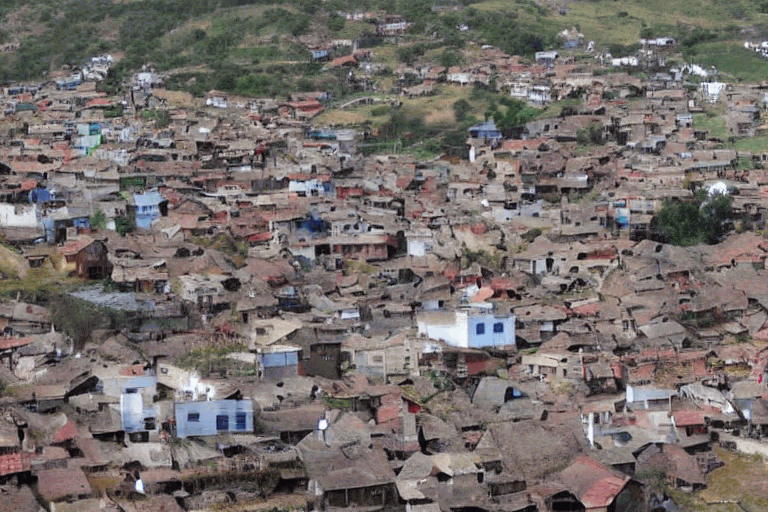
Paharpur, also known as Somapura Mahavihara, is a UNESCO World Heritage Site located in the northwest of Bangladesh, in the Naogaon district. It is one of the most important archaeological sites in the country and a significant Buddhist monastery complex from ancient times.
Paharpur dates back to the 8th century and was built during the reign of the Pala dynasty. The complex covers an area of about 27 acres (11 hectares) and consists of various structures, including a main temple, residential cells, stupas, and ancillary buildings. The main temple, known as the Somapura Mahavihara, was a grand structure with intricate terracotta ornamentation and a central stupa.
Somapura Mahavihara was a renowned center of Buddhist learning and attracted scholars and students from different parts of the Indian subcontinent and beyond. The monastery played a significant role in disseminating Buddhist philosophy and teachings. It served as a place for meditation, study, and intellectual exchanges, contributing to the growth and development of Buddhist culture in the region.
The architectural style of Paharpur reflects a unique blend of local elements with influences from other parts of South Asia. The intricate terracotta decorations on the walls depict various scenes from Buddhist mythology, Jataka tales, and daily life during that era. These detailed carvings provide valuable insights into the cultural, artistic, and historical aspects of the time.
Today, the Paharpur archaeological site is a major attraction for history enthusiasts, archaeologists, and tourists interested in exploring the ancient Buddhist heritage of Bangladesh. Visitors can wander through the ruins, marvel at the architectural grandeur of the past, and imagine the vibrant intellectual and spiritual life that once thrived within the monastery walls.
The site also houses a museum that exhibits artifacts found during excavations, including sculptures, pottery, and other archaeological discoveries. The museum provides a deeper understanding of the historical significance of Paharpur and the Buddhist civilization that flourished in the region.
Paharpur’s status as a UNESCO World Heritage Site ensures its preservation and recognition as a site of universal value. It stands as a testament to the rich cultural and architectural heritage of Bangladesh, and a reminder of the country’s ancient Buddhist roots.
Visiting Paharpur offers a unique opportunity to explore an ancient monastic complex, admire its architectural splendor, and delve into the historical and cultural significance of Buddhism in the region. It is a place where the past comes alive, and visitors can connect with the rich heritage of Bangladesh.
07 Star Mosque:

The Star Mosque, also known as Tara Masjid, is a beautiful mosque located in the Armanitola area of Old Dhaka, the capital city of Bangladesh. It is renowned for its stunning star-shaped decorations, intricate mosaic work, and artistic architectural elements.
The mosque was built in the early 19th century by Mirza Golam Pir, a wealthy merchant. It underwent subsequent renovations and expansions, with the most significant changes made in the early 20th century. The mosque’s distinctive feature is its elaborate mosaic designs, created using broken pieces of Chinese porcelain tiles.
The Star Mosque gets its name from the numerous star-shaped motifs adorning its walls, both inside and outside. These stars, along with floral patterns and calligraphy, create a mesmerizing visual effect. The intricate designs cover the walls, arches, and domes, giving the mosque a unique and ornate appearance.
The mosque’s exterior features a combination of traditional Mughal and Sultanate architectural styles, with a touch of influences from the local Bengal region. The central dome of the mosque is surrounded by smaller domes and minarets, adding to its grandeur. The main prayer hall inside can accommodate a significant number of worshippers.
Inside the mosque, visitors are greeted by a serene atmosphere and a sense of tranquility. The walls are adorned with beautiful Arabic calligraphy, verses from the Quran, and delicate floral motifs. The use of colorful mosaic tiles creates a vibrant ambiance and enhances the aesthetic appeal of the prayer hall.
The Star Mosque is not only a place of worship but also a popular tourist attraction. Its unique architectural features and intricate artwork make it a favorite spot for photographers and art enthusiasts. Visitors can explore the mosque’s premises, appreciate the detailed craftsmanship, and learn about its historical and cultural significance.
It’s important to note that the mosque remains an active place of worship, and visitors are expected to dress modestly and maintain respectful behavior. Taking off shoes before entering the mosque is also customary.
The Star Mosque stands as a symbol of architectural excellence and cultural heritage in Bangladesh. Its stunning mosaic work, star-shaped motifs, and intricate designs make it a remarkable example of Islamic art and craftsmanship. A visit to the mosque offers a glimpse into the rich history, religious devotion, and artistic traditions of the country.
08 Lalbag Fort:
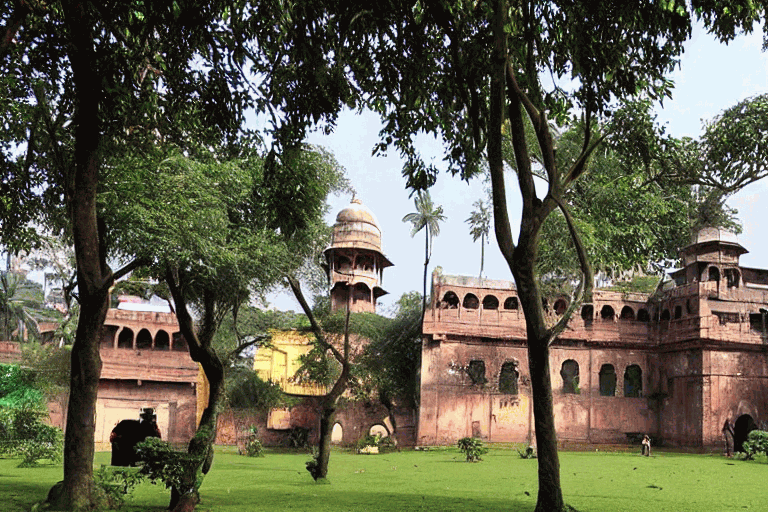
Lalbag Fort, also known as Lalbagh Fort or Fort Aurangabad, is an iconic historical site located in the old part of Dhaka, Bangladesh. It stands on the banks of the Buriganga River and is one of the major tourist attractions in the city.
Construction of Lalbag Fort began in 1678 during the reign of Mughal Subahdar (governor) Prince Muhammad Azam, son of Emperor Aurangzeb. However, due to unforeseen circumstances, the fort was left incomplete and never fully realized. The fort complex includes various structures such as the Diwan-i-Aam (Hall of Public Audience), the Diwan-i-Khas (Hall of Private Audience), the Tomb of Pari Bibi (a mythical princess), a mosque, and the iconic Lalbagh Fort Gate.
The fort’s architecture showcases a fusion of Mughal and Bengal Sultanate styles. The main gateway, known as the Lalbagh Fort Gate or the Aurangabad Gate, features intricate carvings, calligraphy, and a two-story structure. Inside the fort, visitors can explore the lush gardens, pavilions, and remnants of the unfinished palace complex.
One of the notable structures within Lalbag Fort is the Mausoleum of Pari Bibi, which is believed to be the tomb of a favorite mistress or daughter of Subahdar Shaista Khan. The mausoleum features a small mosque with beautiful stone carvings and ornate terracotta decorations.
The fort also houses the impressive Diwan-i-Aam, an open-air audience hall supported by slender columns. It was designed for the Subahdar’s public audience and gatherings. The Diwan-i-Khas, on the other hand, was intended as a private audience hall for the Subahdar. Its architectural features include decorative archways and ornamental marble inlay work.
09 Ahsan Manzil:
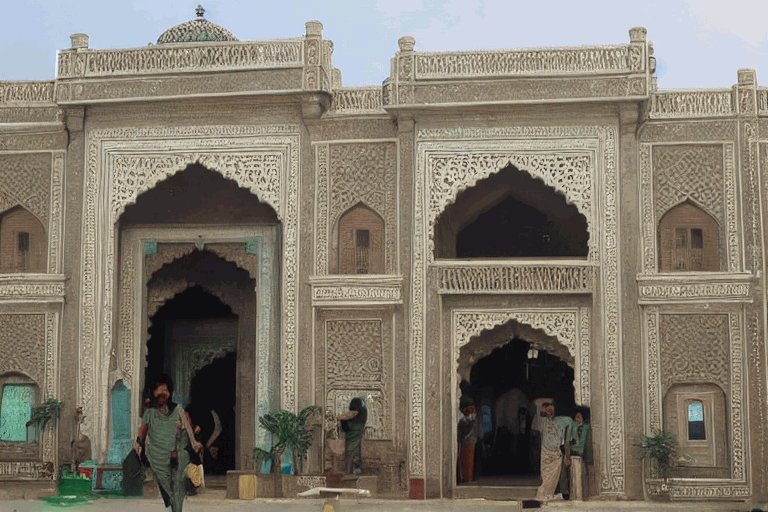
Ahsan Manzil, also known as the Pink Palace, is a historic palace located on the banks of the Buriganga River in Old Dhaka, Bangladesh. It is a significant architectural landmark and a popular tourist attraction in the city.
Constructed in the late 19th century, Ahsan Manzil served as the official residential palace of the Nawabs of Dhaka, who were influential landlords during the British colonial era. The palace was originally built by Nawab Abdul Ghani, and later, his son Nawab Khwaja Alimullah undertook significant renovations and expansions, giving it the distinct architectural style, it is known for today.
The palace is named after Nawab Khwaja Ahsanullah, the grandson of Nawab Abdul Ghani. It spans an extensive area and features a blend of Mughal and European architectural influences. The building’s pink facade, adorned with white decorative elements, gives it a unique and striking appearance.
Ahsan Manzil is a two-story structure, with the lower level originally serving as administrative offices and the upper level as the residential quarters. The palace is accessed through an elegant veranda and grand entrance gate. Inside, visitors can explore various rooms and halls, including the Durbar Hall, which was used for official ceremonies and meetings.
The palace exhibits a rich collection of artifacts, including furniture, artworks, photographs, and other historical items that provide a glimpse into the lifestyle and opulence of the Nawabs. The museum within the palace complex showcases these artifacts, offering visitors an opportunity to learn about the history and cultural heritage of Dhaka.
The surrounding area of Ahsan Manzil features beautifully landscaped gardens and courtyards. The palace’s strategic location on the banks of the Buriganga River adds to its charm, providing a picturesque backdrop for visitors to enjoy.
Ahsan Manzil has undergone restoration and conservation efforts to preserve its historical and architectural significance. The palace offers a fascinating glimpse into the bygone era of Dhaka’s aristocracy and serves as a reminder of the city’s rich cultural heritage.
Visiting Ahsan Manzil allows tourists to explore the magnificent architecture, immerse themselves in history, and appreciate the grandeur of a bygone era. It is a must-visit destination for those interested in heritage, culture, and the architectural splendor of Bangladesh.
10 Lalakhal:

Lalakhal is a scenic riverine destination located in the Sylhet region of Bangladesh. It is known for its pristine blue-green waters, surrounded by lush green hills, and offers a tranquil and picturesque retreat for nature lovers.
The main attraction of Lalakhal is the Lalakhal River, which flows through the region, offering breathtaking views and a serene atmosphere. The river is famous for its crystal-clear waters, reflecting the surrounding hills and creating a mesmerizing sight. Visitors can enjoy boat rides along the river, taking in the scenic beauty and immersing themselves in the tranquility of the surroundings.
As you navigate through the Lalakhal River, you will pass by lush green forests and tea gardens, further enhancing the scenic beauty of the area. The boat ride provides an opportunity to witness the local way of life, observe fishermen casting their nets, and see various bird species that inhabit the riverbanks.
One of the highlights of Lalakhal is the opportunity to visit the stone quarries along the river. These quarries are known for the extraction of stones used in construction and are an interesting sight to behold. The sight of workers extracting stones and the rugged landscape of the quarries add a unique charm to Lalakhal’s natural beauty.
The nearby Ratargul Swamp Forest is another attraction that can be visited from Lalakhal. It is the only freshwater swamp forest in Bangladesh and is home to a diverse range of plant and animal species. Visitors can take a boat ride through the dense forest, experiencing the unique ecosystem and spotting various bird species, monkeys, and other wildlife.
The area around Lalakhal also offers opportunities for adventure and outdoor activities. Trekkers can explore the surrounding hills and enjoy panoramic views of the region. Additionally, fishing enthusiasts can try their hand at angling in the Lalakhal River.
Lalakhal is not only known for its natural beauty but also for its warm hospitality. The local communities’ welcome visitors and provide accommodations and local delicacies. Travelers can experience the local culture, try traditional cuisine, and interact with the friendly residents.
Lalakhal is a destination that allows visitors to connect with nature, relax in serene surroundings, and experience the charm of rural Bangladesh. It is a hidden gem that offers a unique blend of natural beauty, cultural experiences, and adventure opportunities.
11 Shah Jalal Dargah:
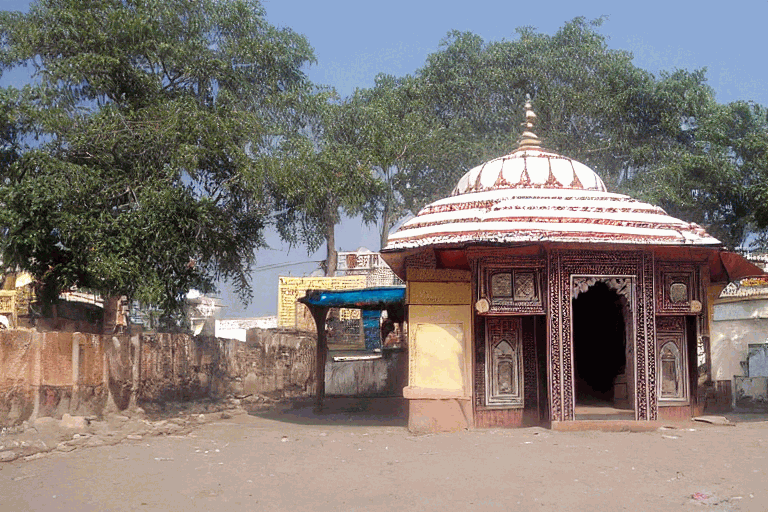
Shah Jalal Dargah is a significant religious shrine and pilgrimage site located in Sylhet, Bangladesh. It is dedicated to Hazrat Shah Jalal, a renowned Sufi saint and Islamic preacher who played a key role in spreading Islam in the region during the 14th century.
Hazrat Shah Jalal was originally from Yemen and traveled to the Indian subcontinent as part of a mission to propagate Islam. He arrived in Sylhet with a group of followers and is said to have played a pivotal role in the conversion of the local people to Islam. He is highly revered by both Muslims and non-Muslims in the region.
The dargah (tomb) of Shah Jalal is the focal point of the shrine. It is located in a complex that also includes mosques, mausoleums, and other structures. The Dargah is a place of reverence and attracts a large number of devotees, pilgrims, and visitors seeking blessings and spiritual solace.
The complex itself is a vibrant hub of activity, particularly during religious festivals and special occasions. The atmosphere is filled with devotion, prayers, and the recitation of religious verses. The dargah complex serves as a gathering place for people from different walks of life, fostering a sense of unity and spirituality.
The architecture of Shah Jalal Dargah reflects a blend of Islamic and local Bengal styles. The main mausoleum is an impressive structure adorned with intricate calligraphy and decorative motifs. Inside the dargah, visitors can pay their respects, offer prayers, and seek blessings. It is believed by many that the dargah holds spiritual significance and has the power to grant prayers and wishes.
The shrine of Shah Jalal is not only a place of religious importance but also an emblem of cultural heritage and historical significance. It serves as a symbol of the rich Islamic heritage and the contributions of Hazrat Shah Jalal in the spread of Islam in the region.
Visiting Shah Jalal Dargah offers an opportunity to experience the religious devotion, cultural traditions, and spiritual ambiance associated with Sufi shrines. It is a place where individuals can find solace, seek blessings, and connect with the deep-rooted spiritual heritage of Bangladesh.
12 Inani Beach:
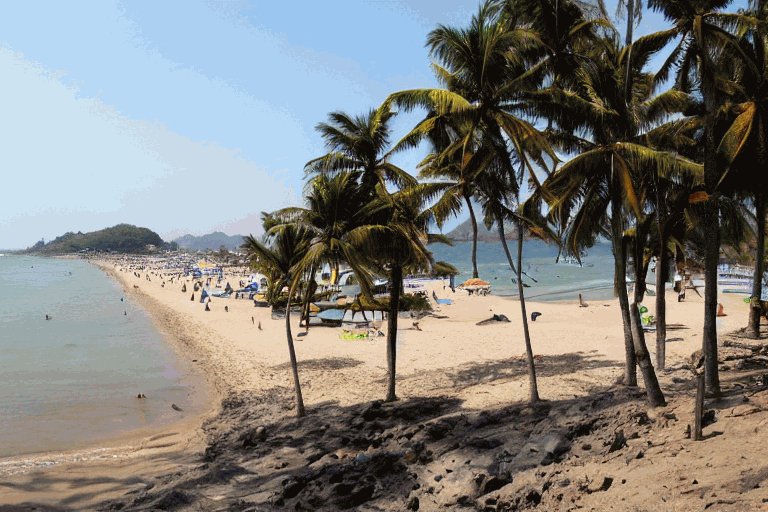
Shah Jalal Dargah is a significant religious shrine and pilgrimage site located in Sylhet, Bangladesh. It is dedicated to Hazrat Shah Jalal, a renowned Sufi saint and Islamic preacher who played a key role in spreading Islam in the region during the 14th century.
Hazrat Shah Jalal was originally from Yemen and traveled to the Indian subcontinent as part of a mission to propagate Islam. He arrived in Sylhet with a group of followers and is said to have played a pivotal role in the conversion of the local people to Islam. He is highly revered by both Muslims and non-Muslims in the region.
The dargah (tomb) of Shah Jalal is the focal point of the shrine. It is located in a complex that also includes mosques, mausoleums, and other structures. The dargah is a place of reverence and attracts a large number of devotees, pilgrims, and visitors seeking blessings and spiritual solace.
The complex itself is a vibrant hub of activity, particularly during religious festivals and special occasions. The atmosphere is filled with devotion, prayers, and the recitation of religious verses. The dargah complex serves as a gathering place for people from different walks of life, fostering a sense of unity and spirituality.
The architecture of Shah Jalal Dargah reflects a blend of Islamic and local Bengal styles. The main mausoleum is an impressive structure adorned with intricate calligraphy and decorative motifs. Inside the dargah, visitors can pay their respects, offer prayers, and seek blessings. It is believed by many that the dargah holds spiritual significance and has the power to grant prayers and wishes.
The shrine of Shah Jalal is not only a place of religious importance but also an emblem of cultural heritage and historical significance. It serves as a symbol of the rich Islamic heritage and the contributions of Hazrat Shah Jalal in the spread of Islam in the region.
Visiting Shah Jalal Dargah offers an opportunity to experience the religious devotion, cultural traditions, and spiritual ambiance associated with Sufi shrines. It is a place where individuals can find solace, seek blessings, and connect with the deep-rooted spiritual heritage of Bangladesh.
13 Sajek Valley:
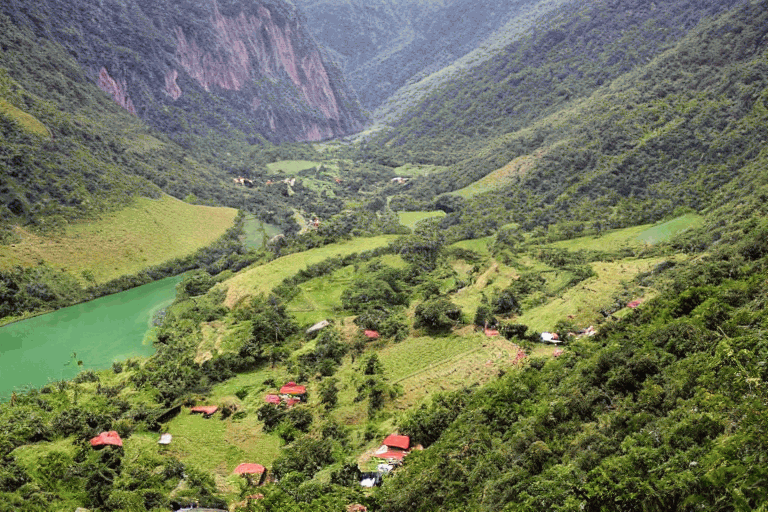
Sajek Valley is a picturesque hill station located in the Rangamati district of Bangladesh. It is situated in the Chittagong Hill Tracts, surrounded by lush green hills, valleys, and ethnic communities. Sajek Valley has gained popularity in recent years as a tranquil retreat offering stunning natural beauty.
The valley is situated at an elevation of around 1,800 feet (549 meters) above sea level, providing a refreshing and cool climate throughout the year. It is known for its panoramic views of the surrounding hills, deep valleys, and meandering rivers. The untouched beauty of the landscape makes it a paradise for nature lovers and photographers.
Sajek Valley is inhabited by different ethnic communities, including the indigenous Tripura people. Visitors have the opportunity to interact with the locals, learn about their culture and traditions, and experience their warm hospitality. The valley is also known for its handicrafts, where visitors can purchase unique handmade items as souvenirs.
One of the major attractions of Sajek Valley is the sunset and sunrise views. The valley offers breathtaking vistas as the sun casts its golden hues over the hills and valleys, creating a magical ambiance. Many visitors flock to the hilltops or viewpoints to witness these enchanting moments.
Trekking is another popular activity in Sajek Valley. There are several trekking trails that take you through the scenic beauty of the hills and forests, allowing you to explore the natural wonders of the area. The trekking routes vary in difficulty, catering to both beginners and experienced trekkers.
Accommodation options in Sajek Valley range from basic guesthouses to eco-resorts, providing a comfortable stay amidst nature. It is advisable to book accommodations in advance, especially during peak tourist seasons, to secure your desired stay.
To reach Sajek Valley, visitors usually travel from Khagrachhari town to Baghaichhari and then continue by four-wheel-drive vehicles or local transport to reach the valley. The journey itself offers beautiful views of the hilly terrain and adds to the overall experience.
A visit to Sajek Valley offers a tranquil escape from the hustle and bustle of city life, allowing you to immerse yourself in the serenity of nature. Whether you’re seeking breathtaking views, cultural interactions, or adventurous trekking experiences, Sajek Valley provides an idyllic getaway to rejuvenate your mind and soul.
14 Mohasthan Garh:
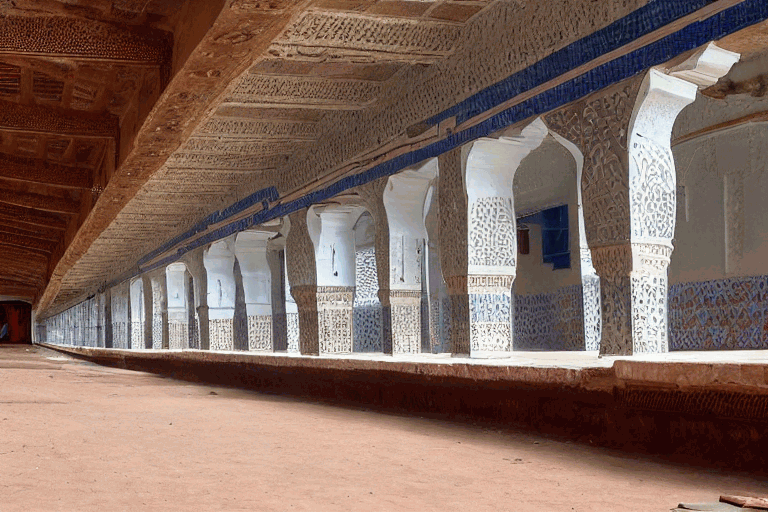
Mohasthangarh, also spelled as Mohenjo-Daro, is an ancient archaeological site located in Bogra district, Bangladesh. It is one of the most important historical and archaeological sites in the country and is recognized as a UNESCO World Heritage Site.
Mohasthangarh dates back to the 3rd century BCE and was an ancient fortified city of the Pundra Kingdom. It served as an important center of trade, administration, and culture during the Maurya and Gupta empires. The site covers a vast area and contains the remains of various structures, including a citadel, residential areas, temples, stupas, and defense walls.
The citadel of Mohasthangarh is the main attraction and is surrounded by impressive fortifications and gates. Inside the citadel, visitors can explore the ruins of the ancient palace, the Durbar Hall (audience hall), and the remains of other structures that give insight into the architectural and cultural aspects of the ancient period.
One of the notable features of Mohasthangarh is the Mankalir Kunda, a sacred pond believed to have healing properties. It is considered a holy site and attracts devotees who come to take a dip in the waters.
The archaeological site also contains several ancient relics, including stone inscriptions, sculptures, pottery, coins, and other artifacts that provide valuable information about the history, art, and lifestyle of the people who lived there centuries ago.
The site is surrounded by a picturesque landscape with green fields, hills, and the flowing Karatoya River, adding to its natural beauty and creating a serene atmosphere.
Visiting Mohasthangarh offers a glimpse into the rich historical and cultural heritage of Bangladesh. It allows visitors to step back in time and witness the remnants of an ancient civilization. The site is of great significance to archaeologists, historians, and those interested in exploring the country’s past.
It’s recommended to explore Mohasthangarh with the assistance of a knowledgeable guide who can provide detailed information about the site and its historical significance. The Bangladesh Department of Archaeology maintains the site and offers facilities such as a museum, visitor center, and guided tours to enhance the visitor experience.
A visit to Mohasthangarh is an opportunity to connect with the roots of Bangladesh’s history, marvel at ancient architecture, and gain insights into the ancient civilizations that once thrived in the region.
15 Nijhum Island:
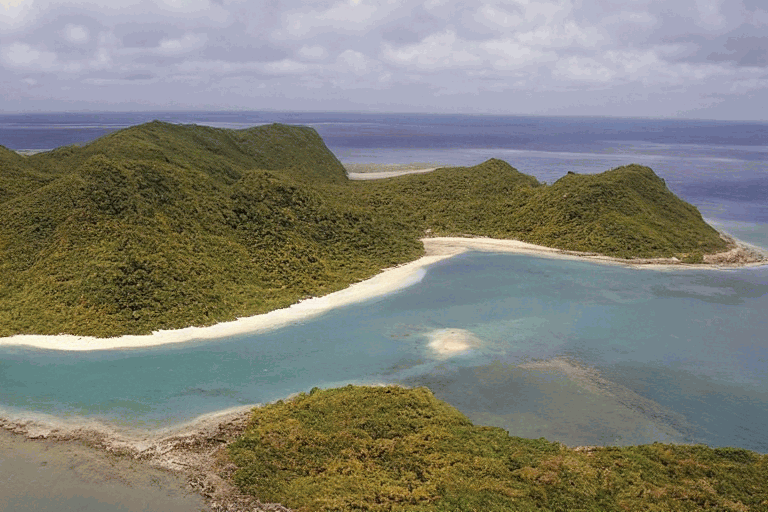
Nijhum Island, also known as Nijhum Dwip, is a secluded and pristine island located in the Bay of Bengal, off the coast of Bangladesh. It is part of the Noakhali district and is known for its untouched natural beauty, diverse wildlife, and serene atmosphere.
Nijhum Island is a relatively unexplored destination, making it a hidden gem for nature enthusiasts and those seeking a peaceful retreat. The island is characterized by its vast stretches of sandy beaches, mangrove forests, and tranquil lagoons, offering a picturesque setting for relaxation and exploration.
The island is home to a rich and diverse ecosystem, making it a haven for birdwatching and wildlife enthusiasts. It is a paradise for bird lovers as various migratory birds visit the island, including endangered species like the spoon-billed sandpiper and Nordmann’s greenshank. The mangrove forests provide nesting grounds for different bird species, creating an ideal habitat for avian life.
Nijhum Island is also known for its wildlife, including deer, wild boars, monkeys, and various reptiles. The surrounding waters are teeming with marine life, making it a popular spot for fishing enthusiasts. Local fishermen offer boat trips to explore the nearby river channels and engage in fishing activities.
The island’s serene and untouched beaches offer visitors the opportunity to relax, stroll along the shoreline, and enjoy the tranquil ambiance. The sandy beaches are ideal for sunbathing, picnicking, and enjoying mesmerizing sunsets.
The local community on Nijhum Island consists of fishermen and farmers, and visitors have the opportunity to experience their way of life and engage in cultural interactions. Accommodation options on the island are limited but include guesthouses and eco-resorts, offering a rustic yet comfortable stay amidst nature.
To reach Nijhum Island, visitors can take a boat or ferry from Hatia, located in the Noakhali district. It is advisable to check the availability of transportation in advance, as schedules may vary depending on the weather and tides.
A visit to Nijhum Island provides a unique opportunity to disconnect from the hustle and bustle of city life and immerse yourself in the tranquility of nature. It is a destination where you can enjoy pristine beaches, observe diverse wildlife, and experience the simplicity of coastal village life.
16 Kuakata Sea Beach:
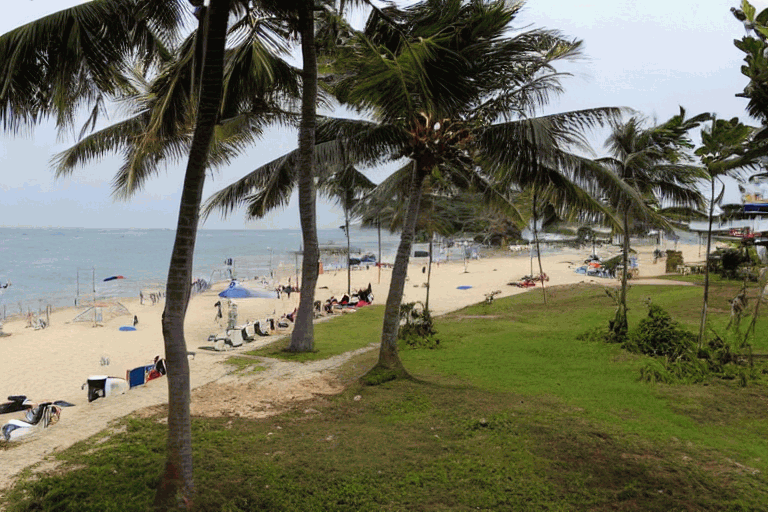
Kuakata Sea Beach is a renowned beach destination located in the Patuakhali district of Bangladesh. It is situated on the southernmost tip of the country, facing the Bay of Bengal. Kuakata is known for its unique geographical location, as it is one of the few places on earth where one can witness both sunrise and sunset over the sea.
The beach at Kuakata stretches for about 18 kilometers (11 miles) and offers panoramic views of the Bay of Bengal. The sandy shoreline is dotted with colorful fishing boats, creating a picturesque and vibrant atmosphere. The beach is relatively less crowded compared to other popular beaches in Bangladesh, providing a serene and peaceful environment for visitors.
The main attraction of Kuakata Sea Beach is the opportunity to witness the stunning views of both sunrise and sunset. As the sun rises from the horizon, the beach comes alive with golden hues, offering a mesmerizing spectacle. Similarly, during sunset, the sky is painted with vibrant colors, creating a magical ambiance.
Another unique feature of Kuakata Sea Beach is the presence of red crabs. The beach is home to a large number of red crabs, which can be seen scurrying across the sands. This adds to the charm and natural diversity of the area.
Kuakata Sea Beach also offers various recreational activities for visitors. You can take a leisurely stroll along the beach, indulge in beachcombing, or simply relax under the shade of palm trees. The gentle waves of the Bay of Bengal make it suitable for swimming, although caution should be exercised as the currents can be strong at times.
The nearby Gangamati Reserved Forest is worth exploring while visiting Kuakata. It is a mangrove forest rich in biodiversity, housing numerous species of flora and fauna. Boat rides through the forest provide an opportunity to observe wildlife and enjoy the tranquility of the surroundings.
Accommodation options in Kuakata range from budget guesthouses to small resorts, offering a comfortable stay near the beach. Local restaurants serve a variety of seafood dishes, allowing visitors to savor the flavors of coastal cuisine.
Kuakata Sea Beach is a destination that combines natural beauty, tranquility, and cultural experiences. It offers a refreshing escape from bustling city life, allowing visitors to unwind and connect with the serene coastal ambiance.
Conclusion:
In conclusion, Bangladesh is a country that offers a diverse range of tourist attractions and experiences. From its pristine beaches to ancient archaeological sites, lush green hills to vibrant cities, Bangladesh has something to offer for every traveler.
The Sundarbans, Cox’s Bazar, and St. Martin’s Island showcase the country’s stunning natural beauty, with opportunities for wildlife spotting, beach activities, and relaxation. The Chittagong Hill Tracts, including places like Rangamati and Bandarban, offer breathtaking landscapes, tribal culture, and trekking adventures.
For history and culture enthusiasts, places like Mohasthangarh, Lalbag Fort, and Paharpur provide insights into the ancient civilizations and architectural wonders of Bangladesh. The mosques and shrines, such as the Star Mosque, Shah Jalal Dargah, and Srimangal, offer glimpses into the religious and spiritual heritage of the country.

